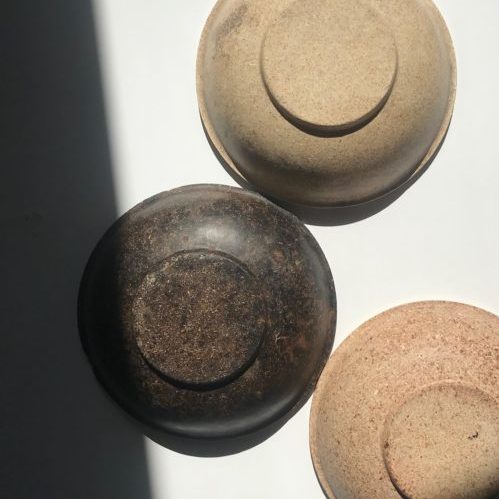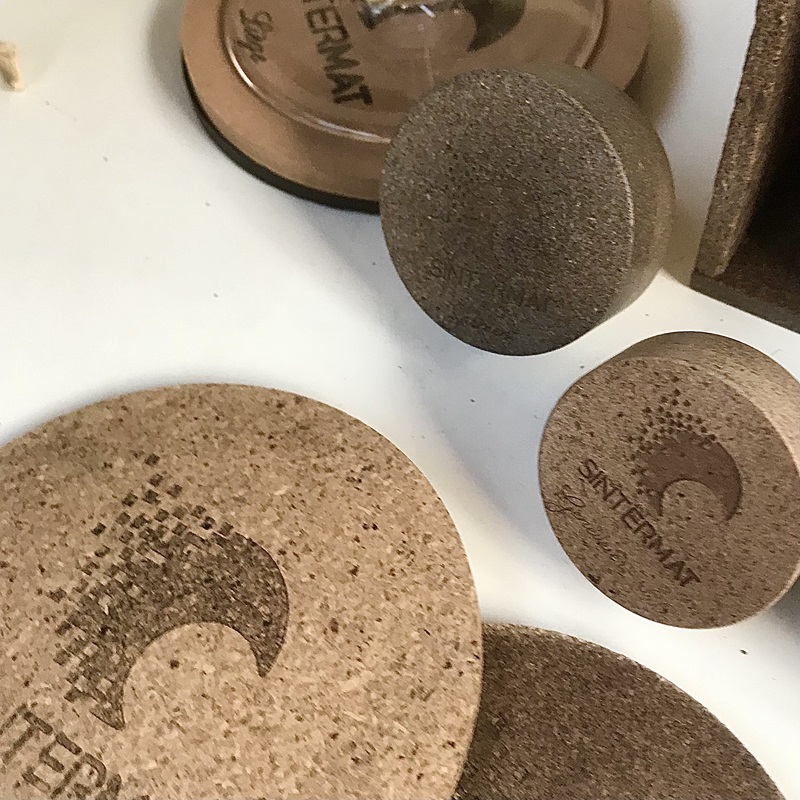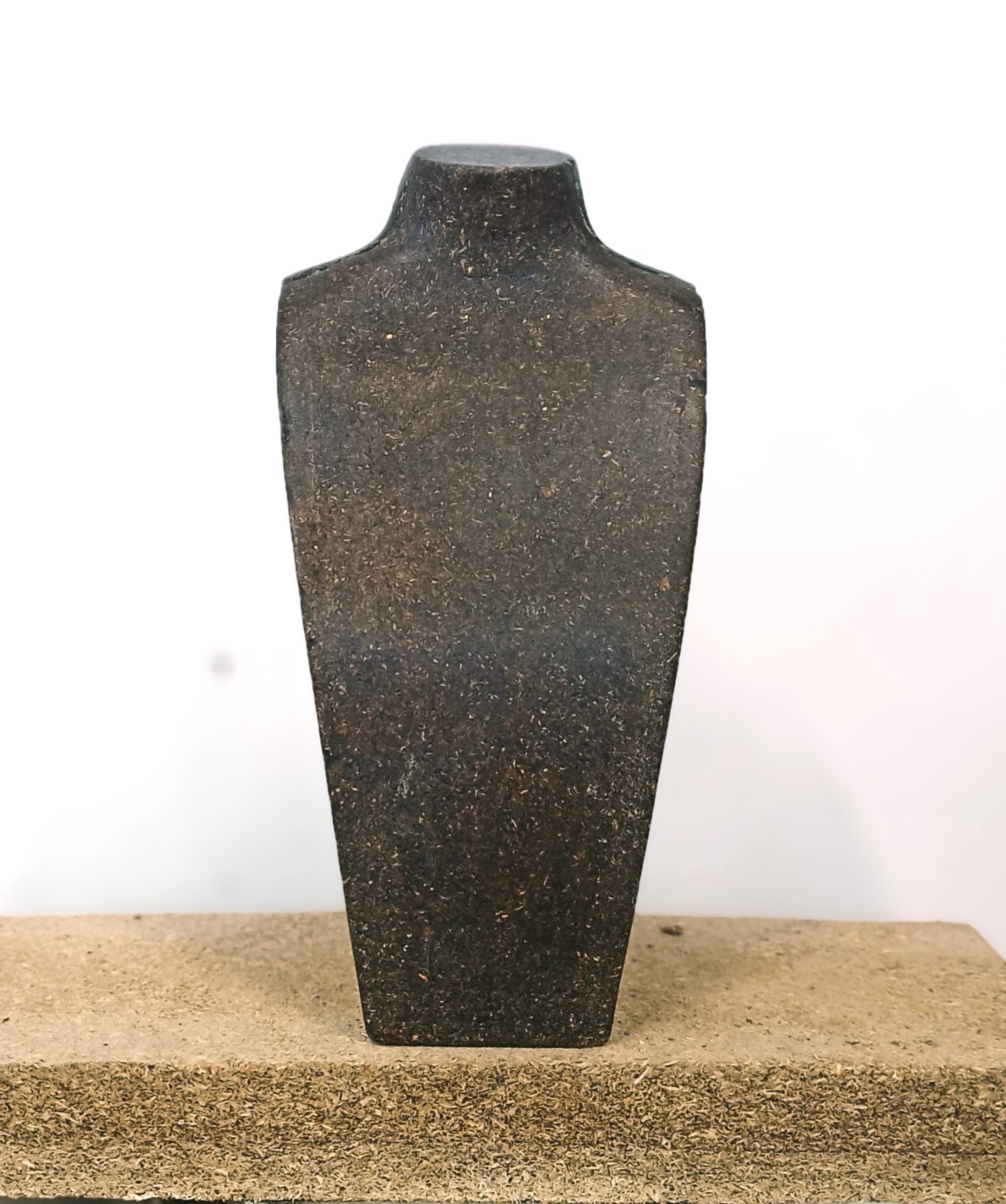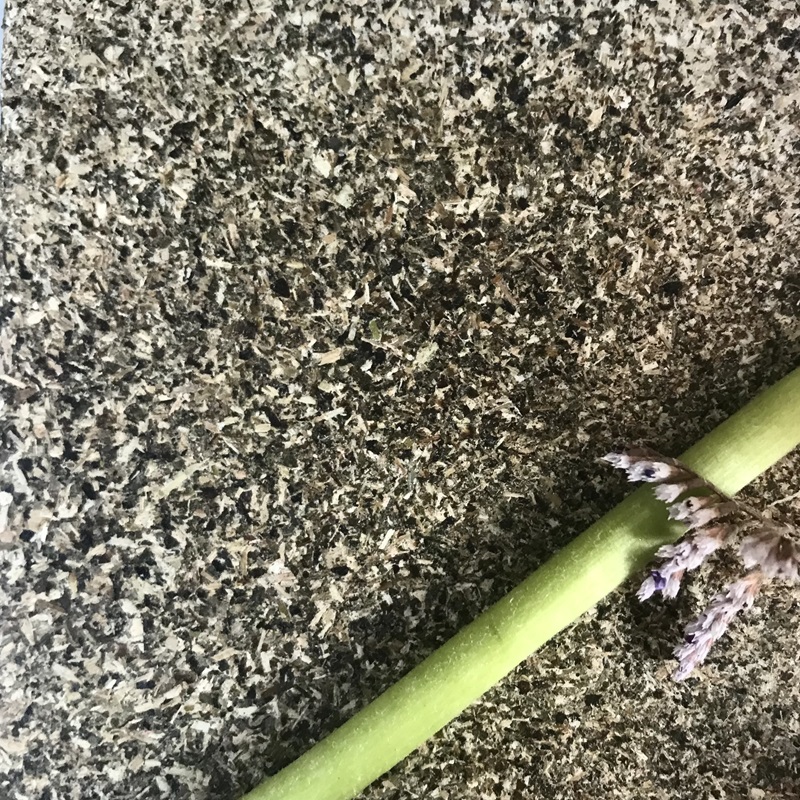




Did you know that dense and compact matter can be reconstituted from organic powders without the addition of glue or binder?
The concept
Coffee grounds, avocado pits and skins, sawdust, cocoa pods, apple pulp, pine needles, flowers, etc. are dried, powdered and agglomerated into 100% organic, 100% compostable sheets, blocks or objects.
There are two approaches to manufacturing these biomaterials:
- The low-tech, open-source version: the Beyond Plastic website offers design plans for a heating press and molds for making 1st objects.
Each material is produced according to a recipe (e.g. coffee grounds + sawdust + flour starch, or even stale bread), with defined humidity, pressure and temperature parameters. Pressing takes several minutes to several hours, depending on the size of the piece.
The process is currently being perfected thanks to a few makers and researchers, and 1st objects are being marketed: this is how we were able to develop the Silexus trays, coffee grounds and avocado pits, collected in a short circuit from Parisian restaurants!
- A high-tech approach based on metal powder sintering technologies, which agglomerate powders by applying pressure and an electrical impulse. The result is high-density, highly resistant materials. This technology is being developed for cork, agricultural by-products, sawdust and even leather... As this process can be used at high pressures and temperatures, tests are also being carried out on shellfish sintering!
Small workshops and manufacturers are seizing the opportunity to create these new materials, as an infinite number of waste and by-products can be transformed in this way.
From Matter to Object
The material can be compacted directly into the final shape using an aluminium mould for thermocompression. In this case, the geometry must be adapted to obtain a part that can be demoulded and in which the pressure is evenly distributed.
The material can be compacted in the form of blocks or plates, which can then be transformed by conventional processes: machining, turning, laser engraving, etc. The assembly of blocks makes it possible to do without formats, but these materials being very dense (1200kg/m³), large parts will be very heavy!
Colours and finishes
The materials currently being developed have naturally brown and rather dark hues. Coffee grounds, cocoa husks, sawdust from different types of wood, peelings and other cores come in many warm and brown shades.
As the exploration of this type of material is still in its infancy, many possibilities remain to be imagined.
For example, the compression of stabilized moss scraps (for plant decorations) will give a material with dark shades of green!
To conclude, as the materials obtained are completely bio-based, they can degrade during prolonged contact with water: to protect them from humidity without synthetic products, a linseed oil or shellac finish can be added, for example.

